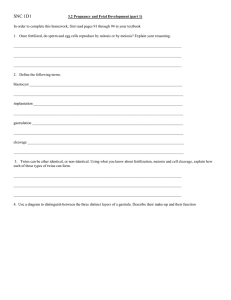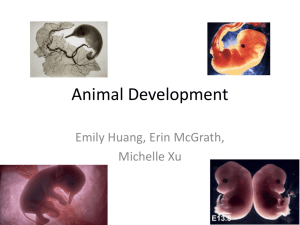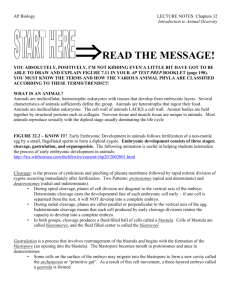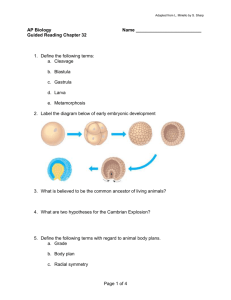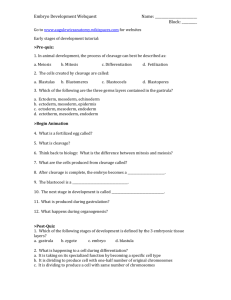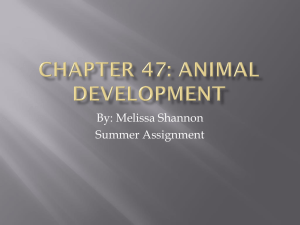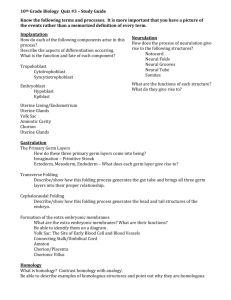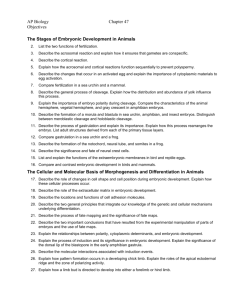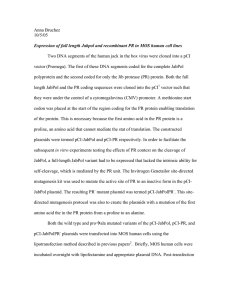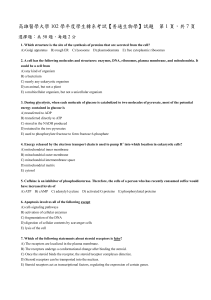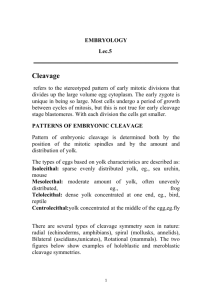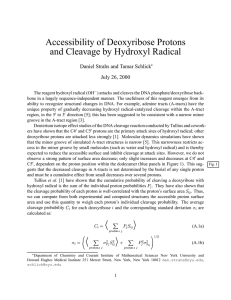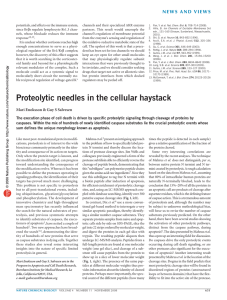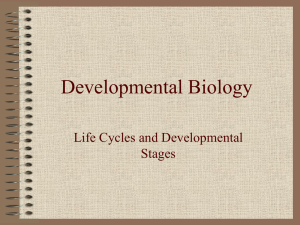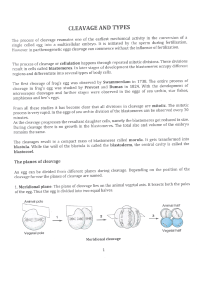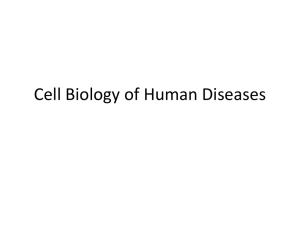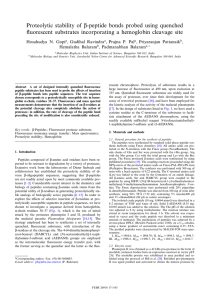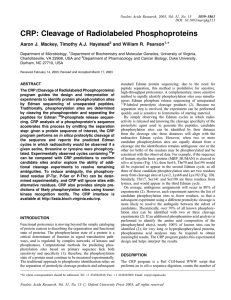File
advertisement
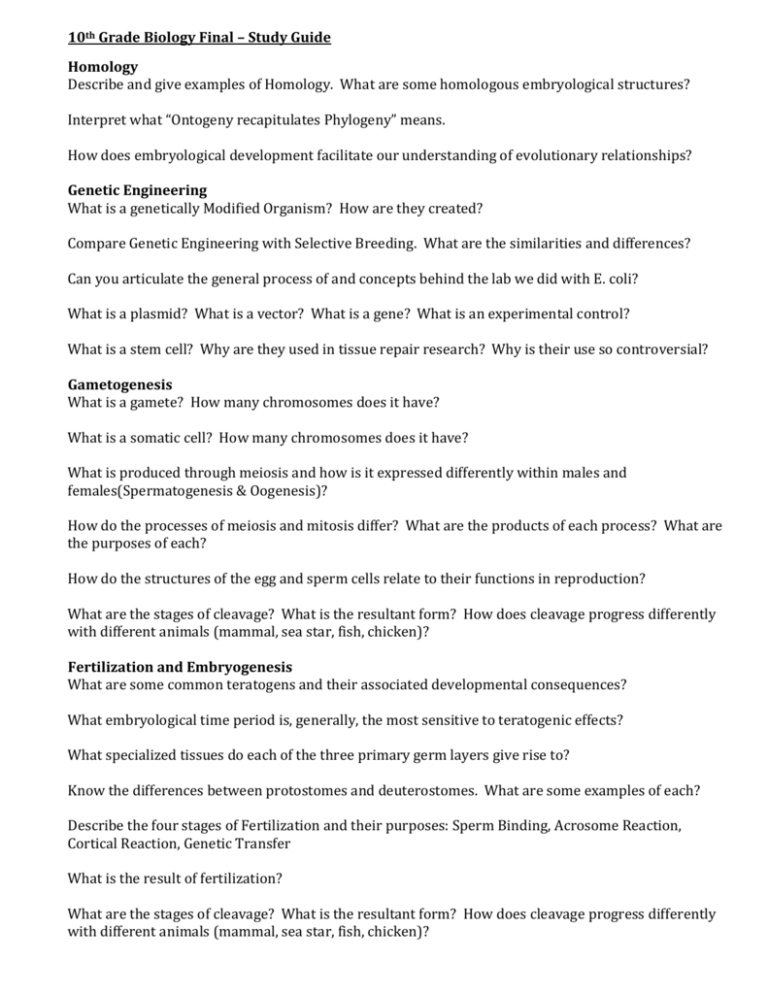
10th Grade Biology Final – Study Guide Homology Describe and give examples of Homology. What are some homologous embryological structures? Interpret what “Ontogeny recapitulates Phylogeny” means. How does embryological development facilitate our understanding of evolutionary relationships? Genetic Engineering What is a genetically Modified Organism? How are they created? Compare Genetic Engineering with Selective Breeding. What are the similarities and differences? Can you articulate the general process of and concepts behind the lab we did with E. coli? What is a plasmid? What is a vector? What is a gene? What is an experimental control? What is a stem cell? Why are they used in tissue repair research? Why is their use so controversial? Gametogenesis What is a gamete? How many chromosomes does it have? What is a somatic cell? How many chromosomes does it have? What is produced through meiosis and how is it expressed differently within males and females(Spermatogenesis & Oogenesis)? How do the processes of meiosis and mitosis differ? What are the products of each process? What are the purposes of each? How do the structures of the egg and sperm cells relate to their functions in reproduction? What are the stages of cleavage? What is the resultant form? How does cleavage progress differently with different animals (mammal, sea star, fish, chicken)? Fertilization and Embryogenesis What are some common teratogens and their associated developmental consequences? What embryological time period is, generally, the most sensitive to teratogenic effects? What specialized tissues do each of the three primary germ layers give rise to? Know the differences between protostomes and deuterostomes. What are some examples of each? Describe the four stages of Fertilization and their purposes: Sperm Binding, Acrosome Reaction, Cortical Reaction, Genetic Transfer What is the result of fertilization? What are the stages of cleavage? What is the resultant form? How does cleavage progress differently with different animals (mammal, sea star, fish, chicken)? Describe the difference between Pluripotent and Totipotent Stem Cells How do the three primary germ layers come into being? Describe/show how the transverse folding process generates the gut tube and brings all three germ layers into their proper relationship. Describe/show how the cephalocaudal folding process generates the head and tail structures of the embryo. What are the extra embryonic membranes? What are their functions? Be able to identify them on a diagram . Organogenesis Be able to identify and understand the following embryonic structures, know what they give rise to: Fore Brain, Mid Brain, Hind Brain Auditory Vesicle Limb Buds Mandibular Arch Hyoid Arch Auricula Visceral Arches Olfactory Pit Timeline of Development: The Fetal Period Approximately, when can the fetus: Grasp Objects? Experience Pain? Suck its Thumb? Make facial expressions? Dream? Recognize the voice of its mother? Produce brain waves? When does it hear? Express/show self-awareness? When are all of the senses active? What are the ways in which it has been determined that fetuses exhibit learning in the womb? Up to what point are abortions legal? At what point can a fetus be born and is guaranteed to live, given our current technology? Big Picture Describe the overall structure of the developing baby at the end of each major developmental period: Cleavage Implantation Gastrulation Organogenesis Explain and give examples for the continued specialization of tissues within the developing baby. How/why do cells become specialized? How does the complexity of the developing embryo arise?
